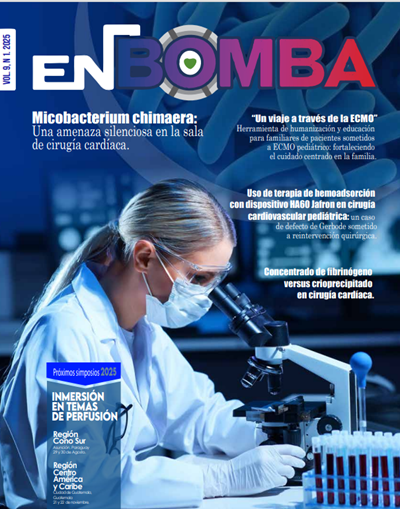Fibrinogen Concentrate Versus Cryoprecipitate in Cardiac Surgery
A Systematic Review of Current Evidence
Keywords:
fibrinógeno, crioprecipitados, cirugía cardíaca, hipofibrinogenemiaAbstract
Introduction and Objectives:
Acquired hypofibrinogenemia is a common cause of perioperative bleeding in cardiac surgery. Traditionally managed with cryoprecipitate, fibrinogen concentrate has emerged as an alternative in recent years. This systematic review aimed to compare the efficacy, safety, and costs of both therapies in this clinical setting.
Methods:
We conducted a systematic search of PubMed, Embase, Scopus, and Cochrane CENTRAL up to April 2025. We included randomized controlled trials and comparative observational studies evaluating fibrinogen concentrate versus cryoprecipitate in cardiac surgery. Data were extracted on hemostatic, transfusional, safety, and economic outcomes. Risk of bias was assessed using RoB 2.0 and ROBINS-I tools.
Results:
Nine studies were included (n=16,195), seven of which were randomized trials. Across all studies, fibrinogen concentrate was non-inferior to cryoprecipitate in controlling bleeding, transfusion requirements, and adverse events. In pediatric populations, it also showed comparable efficacy and safety. Two studies reported that fibrinogen concentrate was more cost-effective. No significant differences were found in thromboembolic events or mortality.
Conclusions:
Fibrinogen concentrate is a safe, effective, and potentially cost-effective alternative to cryoprecipitate in cardiac surgery. Its use may improve transfusion practices, particularly in settings that prioritize standardization and immediate availability. Further research is warranted to assess its long-term impact.
Keywords:
fibrinogen, cryoprecipitate, cardiac surgery, hemostasis, bleeding, blood products
Downloads
Published
How to Cite
Issue
Section
License
Copyright (c) 2025 Susimar Picado-Loaiza

This work is licensed under a Creative Commons Attribution-NonCommercial 4.0 International License.
Los trabajos admitidos para publicación quedan en propiedad de los autores y su reproducción total o parcial está autorizada siempre y cuando se haga referencia a la fuente primaria y no se persigan fines comerciales (Licencia CC Reconocimiento-NoComercial 4.0). La Revista En bomba se reserva el derecho de reproducir (parcial o totalmente) sus publicaciones así reproducir sus contenidos en otros medios o soportes digitales o físicos.








